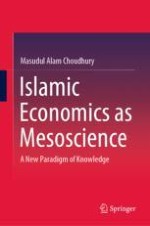2020 | OriginalPaper | Buchkapitel
10. Money, Debt, Interest, and Real Economy
verfasst von : Masudul Alam Choudhury
Erschienen in: Islamic Economics as Mesoscience
Verlag: Springer Singapore
Aktivieren Sie unsere intelligente Suche, um passende Fachinhalte oder Patente zu finden.
Wählen Sie Textabschnitte aus um mit Künstlicher Intelligenz passenden Patente zu finden. powered by
Markieren Sie Textabschnitte, um KI-gestützt weitere passende Inhalte zu finden. powered by
